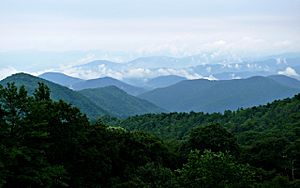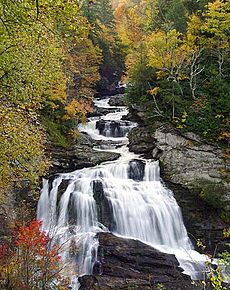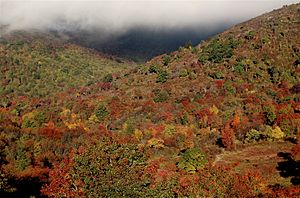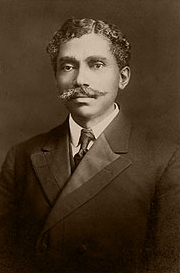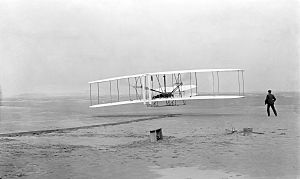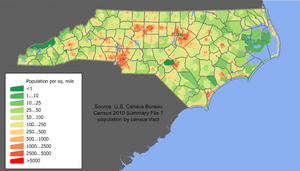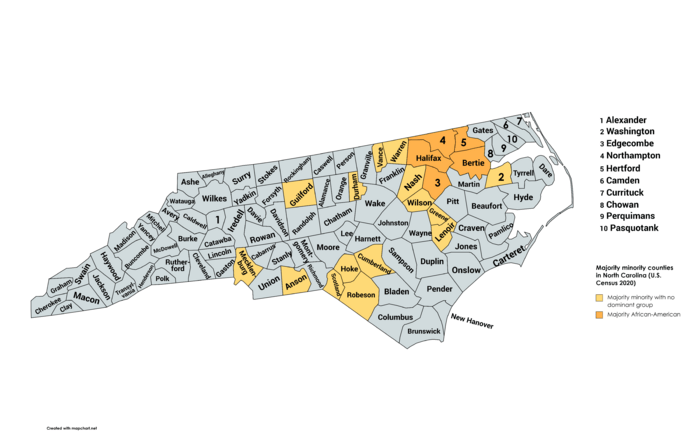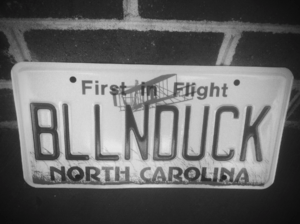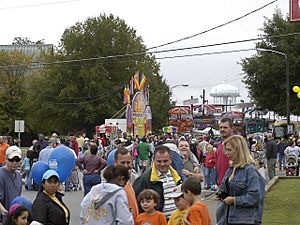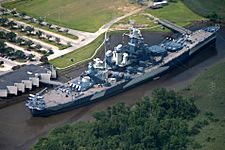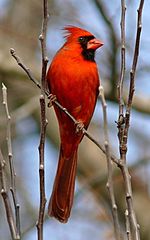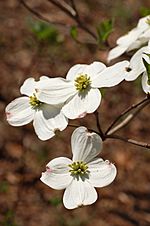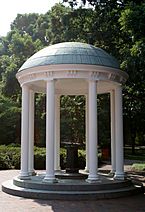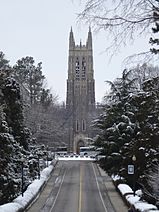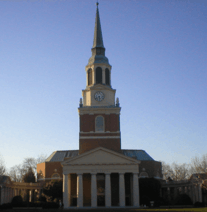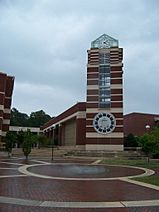North Carolina facts for kids
Quick facts for kids
North Carolina
|
|||
|---|---|---|---|
| State of North Carolina | |||
|
|||
| Nickname(s):
Tarheel State; Old North State
|
|||
| Motto(s):
Esse quam videri: "To be, rather than to seem"
|
|||
| Anthem: Raise Up | |||

Map of the United States with North Carolina highlighted
|
|||
| Country | United States | ||
| Before statehood | Province of North Carolina | ||
| Admitted to the Union | November 21, 1789 (12th) | ||
| Capital | Raleigh | ||
| Largest city | Charlotte | ||
| Largest metro | Greater Charlotte | ||
| Legislature | General Assembly | ||
| • Upper house | Senate | ||
| • Lower house | House of Representatives | ||
| Area | |||
| • Total | 53,819 sq mi (139,390 km2) | ||
| • Land | 48,711 sq mi (126,161 km2) | ||
| • Water | 1,972 sq mi (5,108 km2) 9.5% | ||
| Area rank | 28th | ||
| Dimensions | |||
| • Length | 500 mi (804 km) | ||
| • Width | 184 mi (296 km) | ||
| Elevation | 700 ft (210 m) | ||
| Highest elevation | 6,684 ft (2,037 m) | ||
| Lowest elevation
(Atlantic Ocean)
|
0 ft (0 m) | ||
| Population
(2020)
|
|||
| • Total | 10,453,948 | ||
| • Rank | 9th | ||
| • Density | 214.6/sq mi (82.9/km2) | ||
| • Density rank | 15th | ||
| • Median household income | $52,752 | ||
| • Income rank | 39th | ||
| Demonym(s) | North Carolinian (official); Tarheel (colloquial) |
||
| Language | |||
| • Official language | English | ||
| • Spoken language | As of 2010
|
||
| Time zone | UTC−05:00 (Eastern) | ||
| • Summer (DST) | UTC−04:00 (EDT) | ||
| USPS abbreviation |
NC
|
||
| ISO 3166 code | US-NC | ||
| Trad. abbreviation | N.C. | ||
| Latitude | 33° 50′ N to 36° 35′ N | ||
| Longitude | 75° 28′ W to 84° 19′ W | ||
| North Carolina state symbols | |
|---|---|
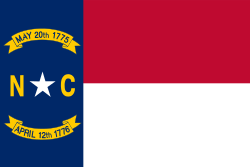
|
|
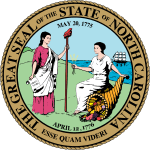
|
|
| Living insignia | |
| Bird | Cardinal |
| Butterfly | Eastern tiger swallowtail |
| Fish | Red drum |
| Flower | Flowering dogwood |
| Insect | Western honey bee |
| Mammal | Eastern gray squirrel |
| Marsupial | Virginia opossum |
| Reptile | Eastern box turtle |
| Tree | Pine |
| Inanimate insignia | |
| Beverage | Milk |
| Colors | Red and blue |
| Dance | Shag |
| Food | Scuppernong grape and sweet potato |
| Fossil | Megalodon teeth |
| Gemstone | Emerald |
| Mineral | Gold |
| Motto | Esse quam videri ("To be, rather than to seem") |
| Rock | Granite |
| Shell | Scotch bonnet |
| Slogan | First in Flight; First in Freedom (unofficial) |
| Song | "Raise Up" |
| Other | Frog: Pine Barrens tree frog |
| State route marker | |
 |
|
| State quarter | |

Released in 2001
|
|
| Lists of United States state symbols | |
North Carolina is a state in the Southeastern region of the United States. The state is the 28th largest and 9th-most populous of the 50 United States. It is bordered by Virginia to the north, the Atlantic Ocean to the east, Georgia and South Carolina to the south, and Tennessee to the west. Raleigh is the state's capital and Charlotte is its largest city. The Charlotte metropolitan area, with an estimated population of 2,569,213 in 2018, is the most-populous metropolitan area in North Carolina, the 23rd-most populous in the United States, and the largest banking center in the nation after New York City. The Raleigh-Durham-Cary combined statistical area is the second-largest metropolitan area in the state, with an estimated population of 2,079,687 in 2019, and is home to the largest research park in the United States, Research Triangle Park.
The earliest evidence of human occupation in North Carolina dates back 10,000 years, found at the Hardaway Site. North Carolina was inhabited by Carolina Algonquian, Iroquoian, and Siouan speaking tribes of Native Americans prior to the arrival of Europeans. North Carolina was established as a royal colony in 1729 and was one of the Thirteen Colonies. North Carolina is named in honor of King Charles I of England who first formed the English colony, Carolus being Latin for "Charles". In 1755 colonial North Carolina received its first postmaster, James Davis, appointed by Benjamin Franklin. The Halifax Resolves resolution adopted by North Carolina on April 12, 1776, was the first formal call for independence from Great Britain among the American Colonies during the American Revolution.
On November 21, 1789, North Carolina became the 12th state to ratify the United States constitution. In the run-up to the American Civil War, North Carolina declared its secession from the Union on May 20, 1861, becoming the tenth of eleven states to join the Confederate States of America. Following the Civil War, the state was restored to the Union on July 4, 1868. On December 17, 1903, Orville and Wilbur Wright successfully piloted the world's first controlled, sustained flight of a powered, heavier-than-air aircraft at Kitty Hawk in North Carolina's Outer Banks. North Carolina uses the slogan "First in Flight" on state license plates to commemorate this achievement, alongside a newer alternative design bearing the slogan "First in Freedom" in reference to the Mecklenburg Declaration and Halifax Resolves.
North Carolina is defined by a wide range of elevations and landscapes. From west to east, North Carolina's elevation descends from the Appalachian Mountains to the Piedmont and Atlantic coastal plain. North Carolina's Mount Mitchell at 6,684 feet (2,037 m) is the highest point in North America east of the Mississippi River. Most of the state falls in the humid subtropical climate zone; however, the western, mountainous part of the state has a subtropical highland climate.
Contents
Geography
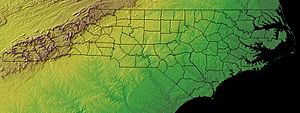
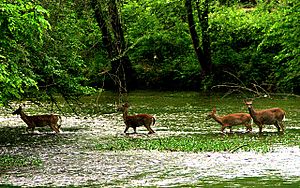
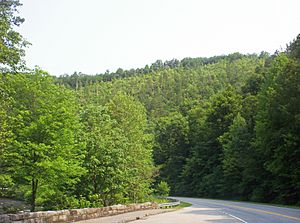
North Carolina is bordered by South Carolina on the south, Georgia on the southwest, Tennessee on the west, Virginia on the north, and the Atlantic Ocean on the east. The United States Census Bureau places North Carolina in the South Atlantic division of the southern region.
North Carolina consists of three main geographic regions: the Atlantic coastal plain, occupying the eastern portion of the state; the central Piedmont region, and the Mountain region in the west, which is part of the Appalachian Mountains. The coastal plain consists of more specifically-defined areas known as the Outer Banks, a string of sandy, narrow barrier islands separated from the mainland by sounds or inlets, including Albemarle Sound and Pamlico Sound, the tidewater region, the native home of the venus flytrap, and the inner coastal plain, where longleaf pine trees are native.
So many ships have been lost off Cape Hatteras that the area is known as the "Graveyard of the Atlantic"; more than 1,000 ships have sunk in these waters since records began in 1526. The most famous of these is the Queen Anne's Revenge (flagship of the pirate Blackbeard), which went aground in Beaufort Inlet in 1718.
The coastal plain transitions to the Piedmont region along the Atlantic Seaboard fall line, the elevation at which waterfalls first appear on streams and rivers. The Piedmont region of central North Carolina is the state's most populous region, containing the six largest cities in the state by population. It consists of gently rolling countryside frequently broken by hills or low mountain ridges. Small, isolated, and deeply eroded mountain ranges and peaks are located in the Piedmont, including the Sauratown Mountains, Pilot Mountain, the Uwharrie Mountains, Crowder's Mountain, King's Pinnacle, the Brushy Mountains, and the South Mountains. The Piedmont ranges from about 300 feet (91 m) in elevation in the east to about 1,500 feet (460 m) in the west.
The western section of the state is part of the Appalachian Mountain range. Among the subranges of the Appalachians located in the state are the Great Smoky Mountains, Blue Ridge Mountains, and Black Mountains. The Black Mountains are the highest in the eastern United States, and culminate in Mount Mitchell at 6,684 feet (2,037 m), the highest point east of the Mississippi River.
North Carolina has 17 major river basins. The five basins west of the Blue Ridge Mountains flow to the Gulf of Mexico, while the remainder flow to the Atlantic Ocean. Of the 17 basins, 11 originate within the state of North Carolina, but only four are contained entirely within the state's border – the Cape Fear, the Neuse, the White Oak, and the Tar-Pamlico basin.
Climate
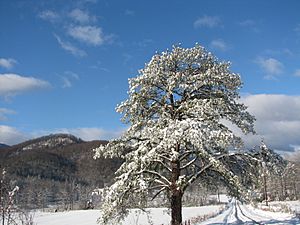
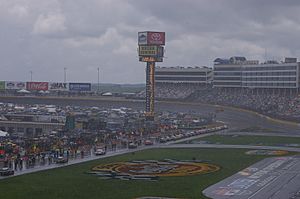
Elevation above sea level is most responsible for temperature change across the state, with the mountain area being coolest year-round. The climate is also influenced by the Atlantic Ocean and the Gulf Stream, especially in the coastal plain. These influences tend to cause warmer winter temperatures along the coast, where temperatures only occasionally drop below the freezing point at night. The coastal plain averages around 1 inch (2.5 cm) of snow or ice annually, and in many years, there may be no snow or ice at all.
The Atlantic Ocean exerts less influence on the climate of the Piedmont region, which has hotter summers and colder winters than along the coast, though the average daily maximum is still below 90 °F (32 °C) in most locations.
North Carolina experiences severe weather in both summer and winter, with summer bringing threat of hurricanes, tropical storms, heavy rain, and flooding. Destructive hurricanes that have hit North Carolina include Hurricane Fran, Hurricane Floyd, and Hurricane Hazel, the latter being the strongest storm ever to make landfall in the state, as a Category 4 in 1954. Hurricane Isabel ranks as the most destructive of the 21st century.
North Carolina averages fewer than 20 tornadoes per year, many of them produced by hurricanes or tropical storms along the coastal plain. Tornadoes from thunderstorms are a risk, especially in the eastern part of the state. The western Piedmont is often protected by the mountains, which tend to break up storms as they try to cross over; the storms will often re-form farther east. A phenomenon known as "cold-air damming" often occurs in the northwestern part of the state, which can weaken storms but can also lead to major ice events in winter.
In April 2011, the worst tornado outbreak in North Carolina's history occurred. Thirty confirmed tornadoes touched down, mainly in the Eastern Piedmont and Sandhills, killing at least 24 people.
History
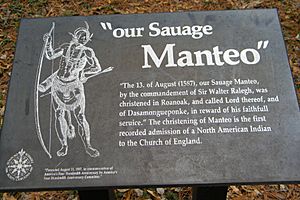
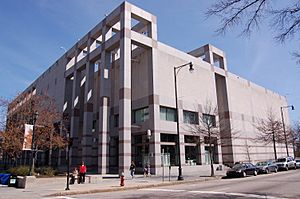
Woodland-culture American Indians were in the area around 1000 BCE; starting around 750 CE, Mississippian-culture Indians created larger political units with stronger leadership and more stable, longer-term settlements.
By 1550, many groups of American Indians lived in present-day North Carolina, including Chowanoke, Roanoke, Pamlico, Machapunga, Coree, Cape Fear Indians, Waxhaw, Waccamaw, and Catawba.
Juan Pardo explored the area in 1566-1567, establishing Fort San Juan in 1567.
In June 1718, the pirate Blackbeard ran his flagship, the Queen Anne's Revenge, aground at Beaufort Inlet, North Carolina, in present-day Carteret County. After the grounding her crew and supplies were transferred to smaller ships. In November, after appealing to the governor of North Carolina, who promised safe-haven and a pardon, Blackbeard was killed in an ambush by troops from Virginia.
North Carolina became one of the English Thirteen Colonies and with the territory of South Carolina was originally known as the Province of Carolina. The northern and southern parts of the original province separated in 1729.
Originally settled by small farmers, sometimes having a few slaves, who were oriented toward subsistence agriculture, the colony lacked cities or towns.
Pirates menaced the coastal settlements, but by 1718 the pirates had been captured and killed.
Growth was strong in the middle of the 18th century, as the economy attracted Scots-Irish, Quaker, English and German immigrants. The colonists generally supported the American Revolution, as the number of Loyalists was smaller than in some other colonies.
During colonial times, Edenton served as the state capital beginning in 1722, and New Bern was selected as the capital in 1766. In 1788 Raleigh was chosen as the site of the new capital, as its central location protected it from coastal attacks. Officially established in 1792 as both county seat and state capital, the city was named after Sir Walter Raleigh, sponsor of Roanoke, the "lost colony" on Roanoke Island.
North Carolina made the smallest per-capita contribution to the war of any state, as only 7,800 men joined the Continental Army under General George Washington; an additional 10,000 served in local militia units under such leaders as General Nathanael Greene.
After 1800, cotton and tobacco became important export crops. The eastern half of the state, especially the Tidewater region, developed a slave society based on a plantation system and slave labor. After Nat Turner's slave uprising in 1831, North Carolina and other southern states reduced the rights of free blacks. In 1835 the legislature withdrew their right to vote.
On May 20, 1861, North Carolina was the last of the Confederate states to declare secession from the Union, 13 days after the Tennessee legislature voted for secession.
With the defeat of the Confederacy in 1865, the Reconstruction Era began. The United States abolished slavery without compensation to slaveholders or reparations to freedmen.
The Democrats in 1896 passed laws to impose Jim Crow and racial segregation of public facilities. Voters of North Carolina's 2nd congressional district elected a total of four African-American congressmen through these years of the late 19th century.
Political tensions ran so high that a small group of white Democrats in 1898 planned to take over the Wilmington government if their candidates were not elected. In the Wilmington Insurrection of 1898, more than 1,500 white men attacked the black newspaper and neighborhood, killed numerous men, and ran off the white Republican mayor and aldermen. They installed their own people and elected Alfred M. Waddell as mayor, in the only coup d'état in United States history.
In 1899 the state legislature passed a new constitution, with requirements for poll taxes and literacy tests for voter registration which disfranchised most black Americans in the state. Exclusion from voting had wide effects: it meant that black Americans could not serve on juries or in any local office. Black citizens had no political voice in the state until after the federal Civil Rights Act of 1964 and Voting Rights Act of 1965 were passed to enforce their constitutional rights. It was not until 1992 that another African American was elected as a US Representative from North Carolina.
The state was the site of the first successful controlled, powered and sustained heavier-than-air flight, by the Wright brothers, near Kitty Hawk on December 17, 1903.
In the first half of the 20th century, many African Americans left the state to go North for better opportunities, in the Great Migration. Their departure changed the demographic characteristics of many areas.
North Carolina was hard hit by the Great Depression, but the New Deal programs of Franklin D. Roosevelt for cotton and tobacco significantly helped the farmers. After World War II, the state's economy grew rapidly, highlighted by the growth of such cities as Charlotte, Raleigh, and Durham in the Piedmont. Raleigh, Durham, and Chapel Hill form the Research Triangle, a major area of universities and advanced scientific and technical research.
In the 1990s, Charlotte became a major regional and national banking center. Tourism has also been a boon for the North Carolina economy as people flock to the Outer Banks coastal area and the Appalachian Mountains anchored by Asheville.
By the 1970s, spurred in part by the increasingly leftward tilt of national Democrats, conservative whites began to vote for Republican national candidates and gradually for more Republicans locally. The Greensboro Sit-ins played a crucial role in the Civil Rights Movement to bring full equality to American blacks.
Demographics
| Historical population | |||
|---|---|---|---|
| Census | Pop. | %± | |
| 1790 | 393,751 | — | |
| 1800 | 478,103 | 21.4% | |
| 1810 | 556,526 | 16.4% | |
| 1820 | 638,829 | 14.8% | |
| 1830 | 737,987 | 15.5% | |
| 1840 | 753,419 | 2.1% | |
| 1850 | 869,039 | 15.3% | |
| 1860 | 992,622 | 14.2% | |
| 1870 | 1,071,361 | 7.9% | |
| 1880 | 1,399,750 | 30.7% | |
| 1890 | 1,617,949 | 15.6% | |
| 1900 | 1,893,810 | 17.1% | |
| 1910 | 2,206,287 | 16.5% | |
| 1920 | 2,559,123 | 16.0% | |
| 1930 | 3,170,276 | 23.9% | |
| 1940 | 3,571,623 | 12.7% | |
| 1950 | 4,061,929 | 13.7% | |
| 1960 | 4,556,155 | 12.2% | |
| 1970 | 5,082,059 | 11.5% | |
| 1980 | 5,881,766 | 15.7% | |
| 1990 | 6,628,637 | 12.7% | |
| 2000 | 8,049,313 | 21.4% | |
| 2010 | 9,535,483 | 18.5% | |
| 2020 | 10,439,388 | 9.5% | |
| Source: 1910–2020 | |||
The United States Census Bureau determined the population of North Carolina was 10,439,388 at the 2020 U.S. census. Based on numbers in 2012 of the people residing in North Carolina 58.5% were born there; 33.1% were born in another state; 1.0% were born in Puerto Rico, U.S. island areas, or born abroad to American parent(s); and 7.4% were foreign-born.
Race and ethnicity
| Race and Ethnicity | Alone | Total | ||
|---|---|---|---|---|
| White (non-Hispanic) | 60.5% |
|
63.9% |
|
| African American (non-Hispanic) | 20.2% |
|
21.8% |
|
| Hispanic or Latino | — | 10.7% |
|
|
| Asian | 3.3% |
|
4.0% |
|
| Native American | 1.0% |
|
2.5% |
|
| Pacific Islander | 0.1% |
|
0.2% |
|
| Other | 0.4% |
|
1.1% |
|
| Racial composition | 1990 | 2000 | 2010 |
|---|---|---|---|
| White | 75.6% | 72.1% | 68.5% |
| Black | 22.0% | 21.6% | 21.4% |
| Asian | 0.8% | 1.4% | 2.2% |
| Native | 1.2% | 1.2% | 1.3% |
| Native Hawaiian and other Pacific Islander |
– | 0.1% | 0.1% |
| Other race | 0.5% | 2.3% | 4.3% |
| Two or more races | – | 1.3% | 2.3% |
At the 2010 U.S. census, the racial composition of North Carolina was: White: 68.5% (65.3% non-Hispanic white, 3.2% White Hispanic), Black or African American: 21.5%, Latin and Hispanic American of any race: 8.4%, some other race: 4.3%, Multiracial American: 2.2%, Asian American: 2.2%, and Native Hawaiian and Pacific Islander: 1%. In 2020, North Carolina like much of the U.S. experienced a decline in its non-Hispanic white population; at the 2020 census, non-Hispanic whites were 62.2%, Blacks or African Americans 20.5%, American Indian and Alaska Natives 1.2%, Asians 3.3%, Native Hawaiian and other Pacific Islanders 0.1%, people from other race 5.9%, and multiracial Americans 6.8%.
Languages
| Language | Percentage of population (as of 2010) |
|---|---|
| Spanish | 6.93% |
| French | 0.32% |
| German | 0.27% |
| Chinese (including Mandarin) | 0.27% |
| Vietnamese | 0.24% |
| Arabic | 0.17% |
| Korean | 0.16% |
| Tagalog | 0.13% |
| Hindi | 0.12% |
| Gujarati, Russian, and Hmong (tied) | 0.11% |
| Italian and Japanese (tied) | 0.08% |
| Cherokee | 0.01% |
North Carolina is home to a spectrum of different dialects of Southern American English and Appalachian English.
In 2010, 89.66% (7,750,904) of North Carolina residents age five and older spoke English at home as a primary language, while 6.93% (598,756) spoke Spanish, 0.32% (27,310) French, 0.27% (23,204) German, and Chinese (which includes Mandarin) was spoken as a main language by 0.27% (23,072) of the population five and older. In total, 10.34% (893,735) of North Carolina's population age five and older spoke a mother language other than English. In 2019, 87.7% of the population aged 5 and older spoke English and 12.3% spoke another language. The most common non-English language was Spanish at the 2019 American Community Survey.
Religion
| Religion in North Carolina (2014) | ||||
|---|---|---|---|---|
| Religion | Percent | |||
| Evangelical Protestant | 35% | |||
| Unaffiliated | 20% | |||
| Mainline Protestant | 19% | |||
| Historically Black Protestant | 12% | |||
| Catholic | 9% | |||
| Mormon | 1% | |||
| Eastern Orthodox | 1% | |||
| Jehovah's Witness | 1% | |||
| Jewish | 1% | |||
| Other faith | 1% | |||
North Carolina residents since the colonial era have historically been overwhelmingly Protestant—first Anglican, then Baptist and Methodist. In 2010, the Southern Baptist Convention was the single largest Christian denomination, with 4,241 churches and 1,513,000 members. The second largest was the United Methodist Church, with 660,000 members and 1,923 churches. The third was the Roman Catholic Church, with 428,000 members in 190 parishes. The fourth largest was the Presbyterian Church (USA), with 186,000 members and 710 congregations; this denomination was brought by Scots-Irish immigrants who settled the backcountry in the colonial era.
In 1845, the Baptists split into regional associations of the Northern United States and Southern U.S., over the issue of slavery. These new associations were the Northern Baptist Convention (today the American Baptist Churches USA) and Southern Baptist Convention. By the late 19th century, the largest Protestant denomination in North Carolina were Baptists. After emancipation, black Baptists quickly set up their own independent congregations in North Carolina and other states of the South, as they wanted to be free of white supervision. Black Baptists developed their own state and national associations, such as the National Baptist Convention. Other primarily African American Baptist conventions which grew in the state since the 20th century were the Progressive National Baptist Convention and Full Gospel Baptist Church Fellowship.
Methodists (the second largest group among North Carolinian Protestants) were divided along racial lines in the United Methodist Church and African Methodist Episcopal Church. The Methodist tradition tends to be strong in the northern Piedmont, especially in populous Guilford County. Other prominent Protestant groups in North Carolina as of the Pew Research Center's 2014 study were non/interdenominational Protestants and Pentecostalism. The Assemblies of God and Church of God in Christ are the largest Pentecostal denominations operating in the state, while notable minorities include Oneness Pentecostals primarily affiliated with the United Pentecostal Church International.
The state also has a special history with the Moravian Church, as settlers of this faith (largely of German origin) settled in the Winston-Salem area in the 18th and 19th centuries. Presbyterians, historically Scots-Irish, have had a strong presence in Charlotte and in Scotland County.
A wide variety of non-Christian faiths are practiced by other residents in the state, including: Judaism, Islam, Baháʼí, Buddhism, and Hinduism. The rapid influx of Northerners and immigrants from Latin America is steadily increasing ethnic and religious diversity within the state. The number of Roman Catholics and Jews in the state has increased, along with general religious diversity as a whole. There are also a substantial number of Quakers in Guilford County and northeastern North Carolina. Many universities and colleges in the state have been founded on religious traditions, and some currently maintain that affiliation, including:
- Barton College (Disciples of Christ)
- Belmont Abbey College (Catholic)
- Bennett College for Women (United Methodist Church)
- Brevard College (United Methodist Church)
- Campbell University (Baptist)
- Catawba College (United Church of Christ)
- Chowan University (Baptist)
- Davidson College (Presbyterian)
- Duke University (Historically Methodist)
- Elon University (United Church of Christ)
- Gardner–Webb University (Cooperative Baptist Fellowship)
- Greensboro College (Methodist)
- Guilford College (Religious Society of Friends/Quakers)
- High Point University (United Methodist Church)
- Lees-McRae College (Presbyterian)
- Lenoir-Rhyne University (Evangelical Lutheran Church in America)
- Livingstone College (African Methodist Episcopal Zion Church)
- Louisburg College (United Methodist Church)
- Mars Hill University (Christian)
- Methodist University (United Methodist Church)
- Montreat College (Christian)
- University of Mount Olive (Baptist)
- North Carolina Wesleyan College (United Methodist Church)
- William Peace University (Presbyterian)
- Pfeiffer University (Methodist)
- Queens University of Charlotte (Presbyterian)
- St. Andrews Presbyterian College (Presbyterian)
- Saint Augustine's College (Episcopal)
- Salem College (Moravian Church)
- Shaw University (Baptist)
- Wake Forest University (Historically Baptist)
- Warren Wilson College (Historically Presbyterian)
- Wingate University (Historically Baptist)
The state also has several major seminaries, including the Southeastern Baptist Theological Seminary in Wake Forest, and the Hood Theological Seminary (AME Zion) in Salisbury.
Economy
North Carolina's 2018 total gross state product was $496 billion. Based on American Community Survey 2010–2014 data, North Carolina's median household income was $46,693. It ranked forty-first out of fifty states plus the District of Columbia for median household income. North Carolina had the fourteenth highest poverty rate in the nation at 17.6%, with 13% of families that were below the poverty line.
The state has a very diverse economy because of its great availability of hydroelectric power, its pleasant climate, and its wide variety of soils. The state ranks third among the South Atlantic states in population, but leads the region in industry and agriculture. North Carolina leads the nation in the production of tobacco. Charlotte, the state's largest city, is a major textile and trade center. According to a Forbes article written in 2013, employment in the "Old North State" has gained many different industry sectors. Science, technology, engineering, and math (STEM) industries in the area surrounding North Carolina's capital have grown 17.9 percent since 2001. Raleigh ranked the third best city for technology in 2020 due to the state's growing technology sector. In 2010, North Carolina's total gross state product was $424.9 billion, while the state debt in November 2012, according to one source, totalled $2.4 billion, while according to another, was in 2012 $57.8 billion. In 2011, the civilian labor force was at around 4.5 million with employment near 4.1 million.
North Carolina is the leading U.S. state in production of flue-cured tobacco and sweet potatoes, and comes second in the farming of pigs and hogs, trout, and turkeys. In the three most recent USDA surveys (2002, 2007, 2012), North Carolina also ranked second in the production of Christmas trees.
North Carolina has 15 metropolitan areas, and in 2010 was chosen as the third-best state for business by Forbes Magazine, and the second-best state by chief executive officer Magazine. Since 2000, there has been a clear division in the economic growth of North Carolina's urban and rural areas. While North Carolina's urban areas have enjoyed a prosperous economy with steady job growth, low unemployment, and rising wages, many of the state's rural counties have suffered from job loss, rising levels of poverty, and population loss as their manufacturing base has declined. According to one estimate, one-half of North Carolina's 100 counties have lost population since 2010, primarily due to the poor economy in many of North Carolina's rural areas. However, the population of the state's urban areas is steadily increasing.
Transportation
Transportation systems in North Carolina consist of air, water, road, rail, and public transportation including intercity rail via Amtrak and light rail in Charlotte. North Carolina has the second-largest state highway system in the country as well as the largest ferry system on the east coast.
North Carolina's airports serve destinations throughout the United States and international destinations in Canada, Europe, Central America, and the Caribbean. In 2013 Charlotte Douglas International Airport, which serves as the second busiest hub for American Airlines, ranked as the 23rd busiest airport in the world.
North Carolina has a growing passenger rail system with Amtrak serving most major cities. Charlotte is also home to North Carolina's only light rail system known as the Lynx.
Tourism
Every year the Appalachian Mountains attract several million tourists to the Western part of the state, including the historic Biltmore Estate. The scenic Blue Ridge Parkway and Great Smoky Mountains National Park are the two most visited national park and unit in the United States with over 25 million visitors in 2013. The City of Asheville is consistently voted as one of the top places to visit and live in the United States, known for its rich art deco architecture, mountain scenery and outdoor activities, and liberal and happy residents.
In Raleigh many tourists visit the Capital, African American Cultural Complex, Contemporary Art Museum of Raleigh, Gregg Museum of Art & Design at NCSU, Haywood Hall House & Gardens, Marbles Kids Museum, North Carolina Museum of Art, North Carolina Museum of History, North Carolina Museum of Natural Sciences, North Carolina Sports Hall of Fame, Raleigh City Museum, J. C. Raulston Arboretum, Joel Lane House, Mordecai House, Montfort Hall, and the Pope House Museum. The Carolina Hurricanes NHL hockey team is also located in the city.
In the Charlotte area, amenities include the Carolina Panthers NFL football team and Charlotte Hornets basketball team, Carowinds amusement park, Charlotte Motor Speedway, U.S. National Whitewater Center, and the Discovery Place. Nearby Concord has the Great Wolf Lodge and Sea Life Aquarium.
In the Conover – Hickory area, Hickory Motor Speedway, RockBarn Golf and Spa, home of the Greater Hickory Classic at Rock Barn; Catawba County Firefighters Museum, and SALT Block attract many tourists to Conover. Hickory which has Valley Hills Mall.
The Piedmont Triad, or center of the state, is home to Krispy Kreme, Mayberry, Texas Pete, the Lexington Barbecue Festival, and Moravian cookies. The internationally acclaimed North Carolina Zoo in Asheboro attracts visitors to its animals, plants, and a 57-piece art collection along five miles of shaded pathways in the world's largest-land-area natural-habitat park. Seagrove, in the central portion of the state, attracts many tourists along Pottery Highway (NC Hwy 705). MerleFest in Wilkesboro attracts more than 80,000 people to its four-day music festival; and Wet 'n Wild Emerald Pointe water park in Greensboro is another attraction.
The Outer Banks and surrounding beaches attract millions of people to the Atlantic beaches every year.
The mainland northeastern part of the state, having recently adopted the name the Inner Banks, is also known as the Albemarle Region, for the Albemarle Settlements, some of the first settlements on North Carolina's portion of the Atlantic Coastal Plain. The regions historic sites are connected by the Historic Albemarle Tour.
Recreation

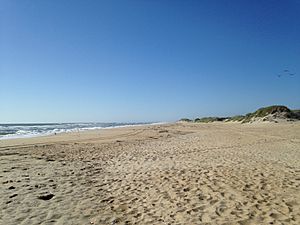
North Carolina provides a large range of recreational activities, from swimming at the beach to skiing in the mountains. North Carolina offers fall colors, freshwater and saltwater fishing, hunting, birdwatching, agritourism, ATV trails, ballooning, rock climbing, biking, hiking, skiing, boating and sailing, camping, canoeing, caving (spelunking), gardens, and arboretums. North Carolina has theme parks, aquariums, museums, historic sites, lighthouses, elegant theaters, concert halls, and fine dining.
North Carolinians enjoy outdoor recreation utilizing numerous local bike paths, 34 state parks, and 14 national parks. National Park Service units include the Appalachian National Scenic Trail, the Blue Ridge Parkway, Cape Hatteras National Seashore, Cape Lookout National Seashore, Carl Sandburg Home National Historic Site at Flat Rock, Fort Raleigh National Historic Site at Manteo, Great Smoky Mountains National Park, Guilford Courthouse National Military Park in Greensboro, Moores Creek National Battlefield near Currie in Pender County, the Overmountain Victory National Historic Trail, Old Salem National Historic Site in Winston-Salem, the Trail of Tears National Historic Trail, and Wright Brothers National Memorial in Kill Devil Hills. National Forests include Uwharrie National Forest in central North Carolina, Croatan National Forest in Eastern North Carolina, Pisgah National Forest in the northern mountains, and Nantahala National Forest in the southwestern part of the state.
Arts and culture
North Carolina has rich traditions in art, music, and cuisine. The nonprofit arts and culture industry generates $1.2 billion in direct economic activity in North Carolina, supporting more than 43,600 full-time equivalent jobs and generating $119 million in revenue for local governments and the state of North Carolina. North Carolina established the North Carolina Museum of Art as the first major museum collection in the country to be formed by state legislation and funding and continues to bring millions into the NC economy. Also see this list of museums in North Carolina.
One of the more famous arts communities in the state is Seagrove, the handmade-pottery capital of the U.S., where artisans create handcrafted pottery inspired by the same traditions that began in this community more than 200 years ago. With nearly 100 shops and galleries scattered throughout the area, visitors can find everything from traditional tableware to folk and collectible art pieces and historical reproductions.
Music
North Carolina boasts a large number of noteworthy jazz musicians, some among the most important in the history of the genre. These include: John Coltrane, (Hamlet, High Point); Thelonious Monk (Rocky Mount); Billy Taylor (Greenville); Woody Shaw (Laurinburg); Lou Donaldson (Durham); Max Roach (Newland); Tal Farlow (Greensboro); Albert, Jimmy and Percy Heath (Wilmington); Nina Simone (Tryon); and Billy Strayhorn (Hillsborough).

North Carolina is also famous for its tradition of old-time music, and many recordings were made in the early 20th century by folk-song collector Bascom Lamar Lunsford. Musicians such as the North Carolina Ramblers helped solidify the sound of country music in the late 1920s, while the influential bluegrass musician Doc Watson also hailed from North Carolina. Both North and South Carolina are hotbeds for traditional rural blues, especially the style known as the Piedmont blues.
Ben Folds Five originated in Winston-Salem, and Ben Folds still records and resides in Chapel Hill.
The British band Pink Floyd is named, in part, after Chapel Hill bluesman Floyd Council.
Cuisine and agriculture
A culinary staple of North Carolina is pork barbecue.
Krispy Kreme, an international chain of doughnut stores, was started in North Carolina; the company's headquarters are in Winston-Salem. Pepsi-Cola was first produced in 1898 in New Bern.
Tobacco was one of the first major industries to develop after the Civil War. Many farmers grew some tobacco, and the invention of the cigarette made the product especially popular.
Ships named for the state
Several ships have been named after the state. Most famous is the USS North Carolina, a World War II battleship. The ship served in several battles against the forces of Imperial Japan in the Pacific theater during the war. Now decommissioned, it is part of the USS North Carolina Battleship Memorial in Wilmington. Another USS North Carolina, a nuclear attack submarine, was commissioned in Wilmington, NC, on May 3, 2008.
State symbols
| North Carolina state symbols | |
|---|---|

|
|

|
|
| Living insignia | |
| Bird | Cardinal (bird) |
| Fish | Red drum |
| Flower | Flowering Dogwood |
| Insect | Western honey bee (Apis mellifera) |
| Mammal | Eastern Gray Squirrel |
| Reptile | Eastern Box Turtle |
| Tree | Longleaf Pine (Pinus palustris) |
| Inanimate insignia | |
| Beverage | Milk |
| Colors | red and blue |
| Dance | Clogging |
| Food | Sweet potato |
| Gemstone | Emerald |
| Mineral | Gold |
| Motto | Esse quam videri ("To be, rather than to seem") |
| Rock | Granite |
| Shell | Scotch bonnet (sea snail) |
| Slogan | First Flight (unofficial) |
| Song | "The Old North State (song)" |
| State route marker | |
 |
|
| State quarter | |

Released in 2001
|
|
| Lists of United States state symbols | |
- State motto: Esse quam videri ("To be, rather than to seem") (1893)
- State song: "The Old North State" (1927)
- State flower: Dogwood (1941)
- State bird: Cardinal (1943)
- State colors: The red and blue of the N.C. and U.S. flags (1945)
- State toast: "The Tar Heel Toast" (1957)
- State tree: Pine (Pinus) (1963)
- State shell: Scotch bonnet (1965)
- State mammal: Eastern gray squirrel (1969)
- State salt water fish: Red drum (also known as the channel bass) (1971)
- State insect: European honey bee (1973)
- State gemstone: Emerald (1973)
- State reptile: Eastern box turtle (1979)
- State rock: Granite (1979)
- State beverage: Milk (1987)
- State historical boat: Shad boat (1987)
- State language: English (1987)
- State dog: Plott Hound (1989)
- State military academy: Oak Ridge Military Academy (1991)
- State tartan: Carolina Tartan (1991)
- State vegetable: Sweet potato (1995)
- State red berry: Strawberry (2001)
- State blue berry: Blueberry (2001)
- State fruit: Scuppernong grape (2001)
- State wildflower: Carolina lily (2003)
- State Christmas tree: Fraser fir (2005)
- State carnivorous plant: Venus flytrap (2005)
- State folk dance: Clogging (2005)
- State popular dance: Carolina shag (2005)
- State birthplace of traditional pottery: The Seagrove area (2005)
- State sport: NASCAR (2011)
Sports
North Carolina is home to four major league sports franchises: the Carolina Panthers of the National Football League, the Charlotte Hornets of the National Basketball Association, and Charlotte FC of Major League Soccer are based in Charlotte, while the Raleigh-based Carolina Hurricanes play in the National Hockey League. The Panthers and Hurricanes are the only two major professional sports teams that have the same geographical designation while playing in different metropolitan areas. The Hurricanes are the only major professional team from North Carolina to have won a league championship, having captured the Stanley Cup in 2006. North Carolina is also home to two other top-level professional teams in less prominent sports—the Charlotte Hounds of Major League Lacrosse and the North Carolina Courage of the National Women's Soccer League.
While North Carolina has no Major League Baseball team, it does have numerous Minor League Baseball teams, with the highest level of play coming from the Triple-A Charlotte Knights and Durham Bulls. Additionally, North Carolina has minor league teams in other team sports including soccer and ice hockey, most notably North Carolina FC and the Charlotte Checkers, both of which play in the second tier of their respective sports.
In addition to professional team sports, North Carolina has a strong affiliation with NASCAR and stock-car racing, with Charlotte Motor Speedway in Concord hosting two Cup Series races every year. Charlotte also hosts the NASCAR Hall of Fame, while Concord is the home of several top-flight racing teams, including Hendrick Motorsports, Roush Fenway Racing, Petty GMS Motorsports, Stewart-Haas Racing, and Chip Ganassi Racing. Numerous other tracks around North Carolina host races from low-tier NASCAR circuits as well.
Golf is a popular summertime leisure activity, and North Carolina has hosted several important professional golf tournaments. Pinehurst Resort in Pinehurst has hosted a PGA Championship, Ryder Cup, two U.S. Opens, and one U.S. Women's Open. The Wells Fargo Championship is a regular stop on the PGA Tour and is held at Quail Hollow Club in Charlotte, and Quail Hollow has also played host to the PGA Championship. The Wyndham Championship is played annually in Greensboro at Sedgefield Country Club.
College sports are also popular in North Carolina, with 18 schools competing at the Division I level. The Atlantic Coast Conference (ACC) is headquartered in Greensboro, and both the ACC Football Championship Game (Charlotte) and the ACC Men's Basketball Tournament (Greensboro) were most recently held in North Carolina. Additionally, the city of Charlotte is home to the National Junior College Athletics Association's (NJCAA) headquarters. College basketball is very popular in North Carolina, buoyed by the Tobacco Road rivalries between ACC members North Carolina, Duke, North Carolina State, and Wake Forest. The ACC Championship Game and the Duke's Mayo Bowl are held annually in Charlotte's Bank of America Stadium, featuring teams from the ACC and the Southeastern Conference. Additionally, the state has hosted the NCAA Men's Basketball Final Four on two occasions, in Greensboro in 1974 and in Charlotte in 1994.
Education
Primary and secondary education

Elementary and secondary public schools are overseen by the North Carolina Department of Public Instruction. The North Carolina Superintendent of Public Instruction is the secretary of the North Carolina State Board of Education, but the board, rather than the superintendent, holds most of the legal authority for making public education policy. In 2009, the board's chairman also became the "chief executive officer" for the state's school system. North Carolina has 115 public school systems, each of which is overseen by a local school board. A county may have one or more systems within it. The largest school systems in North Carolina are the Wake County Public School System, Charlotte-Mecklenburg Schools, Guilford County Schools, Winston-Salem/Forsyth County Schools, and Cumberland County Schools. In total there are 2,425 public schools in the state, including over 200 charter schools. North Carolina Schools were segregated until the Brown v. Board of Education trial and the release of the Pearsall Plan.
Previously the SAT was the dominant university entrance examination students took. In 2004 76% of NC high school students took the SAT. In 2012 state law changed which required 11th grade students to take the ACT. The SAT testing rate fell to 46% in 2019. Because students now can take that test for free, the ACT became the dominant university entrance examination. This also caused SAT average scores to rise, as in 1996 North Carolina was 48th nationally in SAT scores, but the profile of students taking the SAT has gotten smaller.
Colleges and universities
In 1795, North Carolina opened the first public university in the United States—the University of North Carolina (now named the University of North Carolina at Chapel Hill). More than 200 years later, the University of North Carolina system encompasses 17 public universities including North Carolina State University, North Carolina A&T State University, North Carolina Central University, the University of North Carolina at Chapel Hill, the University of North Carolina at Greensboro, East Carolina University, Western Carolina University, Winston-Salem State University, the University of North Carolina at Asheville, the University of North Carolina at Charlotte, the University of North Carolina at Pembroke, University of North Carolina at Wilmington, Elizabeth City State University, Appalachian State University, Fayetteville State University, and UNC School of the Arts, and . Along with its public universities, North Carolina has 58 public community colleges in its community college system. The largest university in North Carolina is currently North Carolina State University, with more than 34,000 students.
North Carolina is also home to many well-known private colleges and universities, including Duke University, Wake Forest University, Pfeiffer University, Lees-McRae College, Davidson College, Barton College, North Carolina Wesleyan College, Elon University, Guilford College, Livingstone College, Salem College, Shaw University (the first historically black college or university in the South), Laurel University, William Peace University, Meredith College, Methodist University, Belmont Abbey College (the only Catholic college in the Carolinas), Campbell University, University of Mount Olive, Montreat College, High Point University, Lenoir-Rhyne University (the only Lutheran university in North Carolina) and Wingate University.
Images for kids
-
1st Maryland Regiment holding the line at the Battle of Guilford Court House, 1781
-
Union troops capture Fort Fisher, 1865
-
Bennett Place historic site in Durham
-
First successful flight of the Wright Flyer, near Kitty Hawk, 1903
-
Troopers of the 82nd Airborne Division training on Fort Bragg, March 2011
-
John White returns to find the colony abandoned
-
Map of the coast of Virginia and North Carolina, drawn 1585–1586 by Theodor de Bry, based on map by John White of the Roanoke Colony
-
Reconstructed royal governor's mansion Tryon Palace in New Bern
See also
 In Spanish: Carolina del Norte para niños
In Spanish: Carolina del Norte para niños




